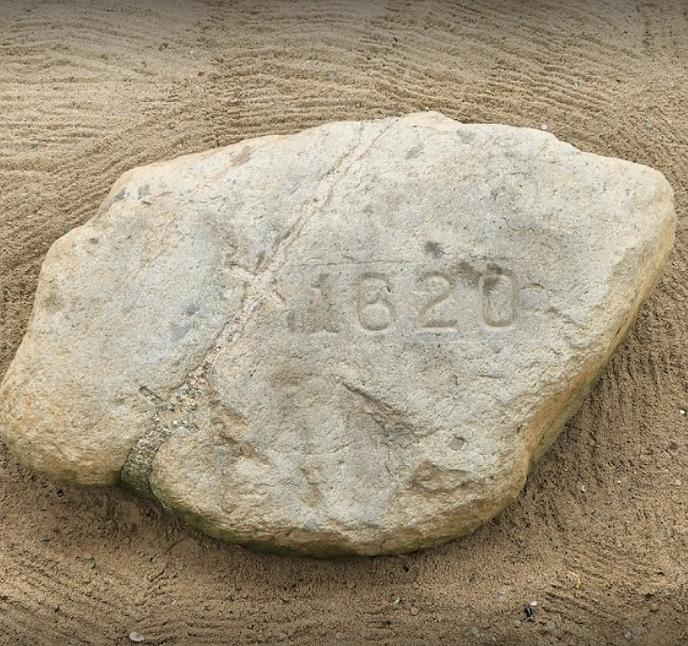
The most iconic piece of American history, Plymouth Rock is the traditional site of disembarkation of William Bradford and the Mayflower Pilgrims who founded Plymouth Colony in December 1620. The Pilgrims did not refer to Plymouth Rock in any of their writings; the first known written reference to the rock dates to 1715 when it was described in the town boundary records as "a great rock." The first documented claim that Plymouth Rock was the landing place of the Pilgrims was made by 94-year-old Thomas Faunce in 1741, 121 years after the Pilgrims arrived in Plymouth. In 1774, the rock broke in half during an attempt to haul it to Town Square in Plymouth. One portion remained in Town Square and was moved to Pilgrim Hall Museum in 1834. It was rejoined with the other portion of the rock, which was still at its original site on the shore of Plymouth Harbor, in 1880. The date 1620 was inscribed at that time. The rock is now ensconced beneath a granite canopy. Come join us on this historical adventure, Matt Villamaino will discuss the significance of the rock and answers student questions. Matt Villamaino is the Regional Interpretive Coordinator for the Central Region of Massachusetts State Parks. He served as the Visitor Services Supervisor at Pilgrim Memorial State Park for two years and has also worked at Mt. Holyoke Range State Park, Skinner State Park, and Mt. Tom State Reservation. He began in the field of interpretation as a volunteer at the Jamestown Settlement Museum in Williamsburg MA. He is a Certified Heritage Interpreter and is a member of the USS Constitution 1812 Marine Guard.






